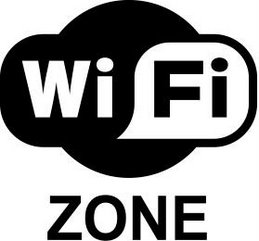Hawaii presented a unique challenge and opportunity for those engineers and graduate students. At the time, computers were capable of being linked, but only across a computer room floor using a cable the diameter of your thumb. The only alternative was known as Sneaker net, in which data was put onto a floppy disk or tape and carried to a distant computer, presumably by someone wearing comfortable sneakers. That was inadequate for the islands, which were separated by distance and natural barriers.
Moving a spreadsheet by courier might entail an expensive boat or helicopterride. The tapes or printouts could get lost or damaged, and in any case the information they contained would be aging while it was in transit.
Multiple copies would accumulate, and corrections or updates required more boat rides. Those limitations are actually familiar to today’s commuters, who often carry their CD-ROMs or laptops from their offices to their homes and back again day after day. It would be so much easier if they could just move the information and leave the battery packs, wires, and floppies behind.
But Hawaii’s isolation in the middle of the Pacific also handed the AlohaNet engineers a solution. Plenty of radio frequencies were available for use as transmission media. The islands consisted of relatively few people and therefore relatively little man-made interference. The flat ocean provided unobscured line-of-sight paths for the signals to travel. Soona blizzard of data was flying from Lanai to Oahu at the speed of light. The concept had been proven, but could it be exported to the mainland? The answer was: not easily.
Coaxial Cables California abounded in mountains, which do not pass radio waves. Wherever you tuned on the radio dial in metropolitan areas, someone was already there. When a new frequency band became available through regulation or a technology advance, lots of entrepreneurs waitedto fill the vacuum. Wireless networking had to be put on hold as engineers were forced to return to coaxial cable. This wire used a central elements urrounded by a layer of insulation and a cylindrical metal or woven shield. It was expensive because it had to be manufactured to precise tolerances. But data signals did not escape from it to pollute the airwaves, nor did interference penetrate. The scheme was given the name broadband,because as the amount of digital data increased, it could be apportioned onto additional frequency channels. Often those channels were shared with traditional video signals on the same type of cable that brings television signals into your home.Multiconductor Cables When cheaper technologies were developed a decade ago, the coaxial cable was deemed obsolete and replaced with the local area network (LAN) drops we know today. These are unshielded multiconductor cables, about the diameter of a chopstick, adapted from use by the telephone industry. Their immunity from signal pollution comes from the arrangement of the wires inside. To this day, universal twisted pair wiring remains the most common way of making computers talk to one another.
It is rare when a technology rises from the dead, but propelled by an unquenchable popular demand, broadband TV cable is once again being used to deliver data to millions of homes. Likewise, recent advances and refinements have revived wireless as a means of easily interconnecting computers inside homes, businesses, and home-based businesses. That real has been given the acronym SOHO, for Small or Home Office. Over a hundred manufacturers are sending SOHO-targeted products to market.The Internet Arrives As the means of interconnection has evolved, sohas “the end.” The Internet began with the National Science Foundation Actof 1950, as an A-bomb-proof means for academics and military researchers to send text to one another. Until 1992, using it for profit was actually illegal.
Since then it has become a commercial, all-encompassing medium unto itself, augmenting and even displacing traditional communication channels, such as radio, television, telephones, newspapers, and even the postal service. Some new businesses, such as Amazon.com or the Google search engine, could not exist without it.At one time, home telephones were considered to be either a luxury ora business imposition. But they quickly turned into a necessity, such that most homes now have several, with many on second or even third home telephone lines. In turn, these wired phones are being augmented or displaced by cell phones. The same process is happening with home computers, as they migrate from the business desktop to the kitchen tabletop. Home owners know that their PC power is multiplied when they share information.
Is This Trip Necessary?
DSL Arrives The stage was set for Wi-Fi home networks with the arrival of digital subscriber line (DSL). This development enables your connection to the telephone or cable TV systems to double as high-speed data channels to the Internet. To get the 1.5 Mbps speeds that DSL now offers, customers previously would have to purchase a dedicated T1 line that would cost between $700 and $1,100 per month. A DSL connection, which can carry regular phone calls as well as data, costs about a tenth of that. Like broadband cable, telephone infrastructure has the considerable advantage of already being in place under streets and hanging from telephone poles.You will not need to dig a trench across your front lawn to get connected.
All these technologies can now be applied in combination so that the Internet or the World Wide Web can finally cross the last mile into apartments, shops, and split-levels from Cleveland to Fairbanks. Practically anyone can afford it. As time marches on, few can afford to ignore it.
Subscribe to:
Post Comments (Atom)

No comments:
Post a Comment